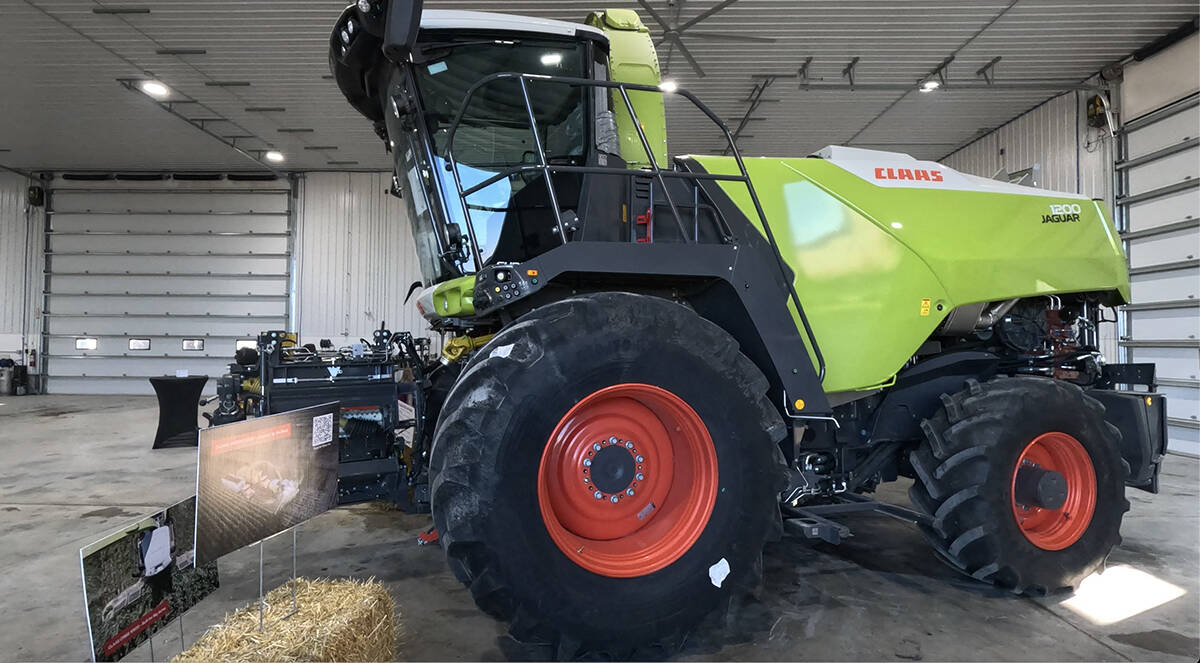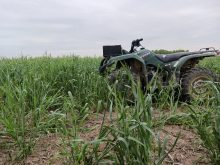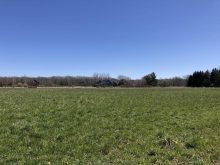Cover crops are environmentally beneficial but to determine if they pay for themselves, growers need to provide detailed data on costs and revenue.
Aaron Breimer, general manager for Deveron’s Chatham-based Veritas Farm Management, says his experience with cover crops highlights the need to repeatedly verify a practice before concluding whether it’s profitable or not.
Why it matters: The costs and practical barriers of cover cropping are real, but conventional practices come with costs too.
Read Also

Claas brings 1000 Series SP forage harvesters to Canada
In mid-August, Claas unveiled its new line of Jaguar forage harvesters at an event in Visalia, California, deep in the heart of that state’s dairy region.
Breimer was speaking at the 2021 Midwest Cover Crops Council Conference.
Proper verification can involve in-field test strips or test blocks within the field, as well as experimenting with the same practice in different fields.
Breimer says he has had success with strips 90 feet in width, and blocks around one-third of an acre.
He says every field should be considered a unique location and he cites an experience where oats and poultry manure brought significant corn yield increases on one of his family’s fields, but the impact of the same practice in other locations brought much lower returns.
The type of information gathered from test areas can include a variety of metrics, such as fluctuations in yield, and whether fewer herbicide controls are required in cover-cropped areas.
These and other considerations all indicate whether a practice makes money directly, saves it indirectly, or does neither.
With such a variety of potential information, he adds growers need to ensure they’re looking at the right data sets.
Being aware of one’s implied bias — that is, finding what you’re looking for rather than what’s actually there — is another consideration.
“Having a critical eye and having someone else look at your data is not always a bad thing,” says Breimer.
Mark Richards, a grain and processing vegetable grower from Dresden, also spoke during the session.
He says the costs of getting cover crops established and whether they fit well within existing growing systems are central considerations.
Other things to watch include the cost of seed, establishment via drill or broadcast, and whether it’s possible to apply cover crops while simultaneously making passes in the field for other purposes.
The strategy should also not compromise timing, resource availability and other factors of the farm’s main operations.
Richards’ experience also suggests more is not always better. He believes simple mixes can often be the go-to solution for higher profitability. Multi-species mixes work too, though he cautions it might be worthwhile reducing rates to keep both costs and headaches down. Making adjustments based on outcomes is critical regardless of the chosen approach.
As well, if a certain cover crop strategy requires operational changes, growers must consider what those changes could cost.
Additional herbicide, for example, costs more. The need for different equipment is another significant cost. Growers should also consider the necessary resources should they be forced to adapt to unfavourable conditions, such as the need to terminate a cover crop in overly wet conditions.
“Some years you win, some years you don’t,” he says, again emphasizing the importance of adaptation.
Regarding equipment modifications, Richards says growers should remember “just because you can, doesn’t mean you should.”
Before starting a new project, see what’s available. It’s OK to keep costs down wherever possible, but tackling something you are not ready for or capable of can sour the experience.
Cover crops might have upfront costs, but so do the practices already being employed on the farm, particularly tillage.
According to Jack Cornell, field manager director for Illinois-based Soil Health Partnership, research conducted by his organization indicates taking a field-specific approach to tillage, and a more general use of conservation tillage, have a noticeable impact on operating costs.
Even when combined with cover cropping programs and the resulting increase in herbicide application expenses, conventional tillage is more expensive.
In soybeans, for example, conservation tillage with a cover crop program was equivalent to the costs of conventional tillage, but with the former, the same amount of money brings soil health benefits.
Just as the ecological benefits of cover crops take time to accrue, so does experience. However, more experience itself translates to higher profitability as growers learn to adapt their cover crop strategy. This, says Cornell, is tied to growers’ ability to fine-tune their systems.
In his experience, those comparatively new to cover cropping tend to spend more on seed, pay higher fertilizer premiums, and require more equipment repairs. These expenses diminish over time as the individual better understands their system.
Cornell said it takes about five years to show improved profits.
“Experienced croppers have really dialled in their recipe.”













